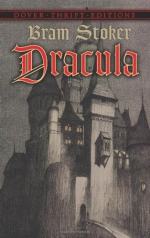|
This section contains 9,860 words (approx. 33 pages at 300 words per page) |

|
SOURCE: Gelder, Ken. “Reading Dracula.” In Reading the Vampire, pp. 65-85. London: Routledge, 1994.
In the following essay, Gelder elucidates various critical interpretations of Dracula.
Few other novels have been read so industriously as Bram Stoker's Dracula. Indeed, a veritable ‘academic industry’ has built itself around this novel, growing exponentially in recent years and, in effect, canonising a popular novel which might otherwise have been dismissed as merely ‘sensationalist’. To enable its canonisation (a process to which this chapter contributes), Dracula has become a highly productive piece of writing: or rather, it has become productive through its consumption. To read this novel is to consume the object itself, Dracula, and, at the same time, to produce new knowledges, interpretations, different Draculas. Paul O'Flinn has noted, in his article on Mary Shelley's famous Gothic story, ‘There is no such thing as Frankenstein, there are only Frankensteins, as the text is...
|
This section contains 9,860 words (approx. 33 pages at 300 words per page) |

|


